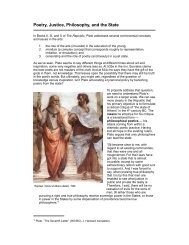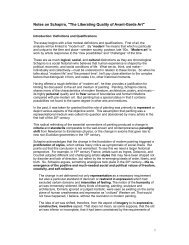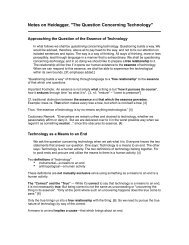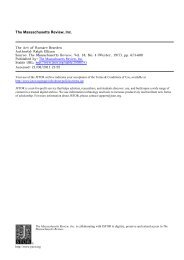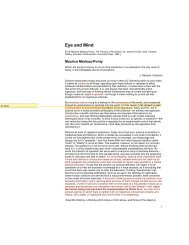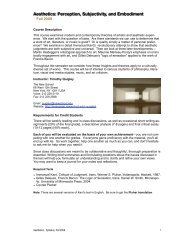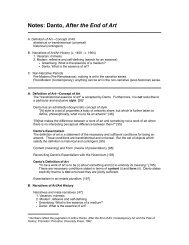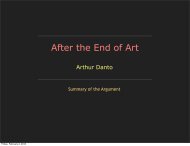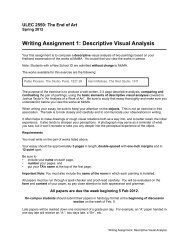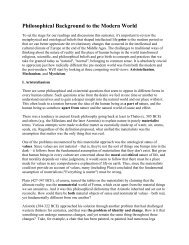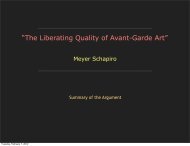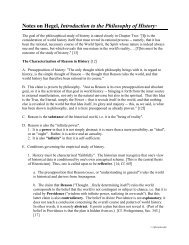AN ANALYSIS OF THE WORK OF ART - Timothy R. Quigley
AN ANALYSIS OF THE WORK OF ART - Timothy R. Quigley
AN ANALYSIS OF THE WORK OF ART - Timothy R. Quigley
You also want an ePaper? Increase the reach of your titles
YUMPU automatically turns print PDFs into web optimized ePapers that Google loves.
tinctions in proportion do not take us very far unless we consider the experienceof moving from part to part or from part to the whole: in other words, the characterof the composition.To clarify the differences of these organizations of planes as they appear in ourviews of the buildings, we might make simple diagrams. It is at once suggestedthat the formal dignity of Palladio's villa is dependent not only on the selfcontainedshapes but on their participation in a scheme of strict symmetry inwhich every part bears a fixed and readily perceptible relationship to every otherpart. A vertical axis is suggested in the very center of the facade to which all partsseem to make reference, repeating on either side exactly the same shapes andforms. Not only this, but the planes seem to be only the foreparts of simple cubicvolumes which unite around a clearly defined axis in the center of the building.An examination of the scheme underlying the plan bears out this consistency oforder.The organization of the Wright house is, however, much more difficult to define.The horizontal movement is continued throughout by the overlapping planes; yetsomehow these expanding parts are held together in a unified whole. There is nosimple geometric shape to bound the assembled forms—in fact it is difficult toconceive of the profile of the house by itself—but somewhere within the life ofthese moving forms we recognize a center that seems to unify them. This ismade the more complicated by the fact that these planes seem to relate also tovolumes which in turn bound other volumes, as for example the deep space betweenthe overhanging eaves and the balcony. Consequently our "center" seemsto lie within the complex of these interlocking volumes. But much as in the Billsculpture, this center of order can be experienced through the interplay of formsyet cannot be specifically defined. Our eye continues to move and search, seekingto experience to the utmost the elusive order existing within constant change.In Palladio the pleasure derives not from a sense of expansion and change but inthe justness of the harmonies and the completeness of the order in which we areinvited to participate.Compare the plans of the two buildings with the facades and you will see thatthere is an internal relationship that would strongly affect our experience whilewalking around or through the spaces of the buildings. But the special nature ofsuch experience will be discussed later. Here we must catch up two important14



